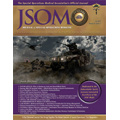Helicopter Crashes in the Deployed Combat Setting: The Department of Defense Trauma Registry Experience
Jude JW, Spanier AM, Hiller HM, Weymouth WL, Cunningham CW, Hill GJ, Schauer SG 22(3). 57 - 61 (Journal Article)
Background: Military helicopter mishaps frequently lead to multiple casualty events with complex injury patterns. Data specific to this mechanism of injury in the deployed setting are limited. We describe injury patterns associated with helicopter crashes. Materials and Methods: This is a secondary analysis of a Department of Defense Trauma Registry (DODTR) dataset from 2007 to 2020 seeking to describe prehospital care within all theaters in the registry. We searched within the dataset for casualties injured by helicopter crash. A serious injury was defined by an abbreviated injury scale of ≥3 by body region. Results: We identified 120 casualties injured by helicopter crash within the dataset. Most were Army (64%), the median age was 30 (interquartile range [IQR] 26-35), and most were male (98%), enlisted service members made up the largest cohort (47%), with most injuries occurring during Operation Enduring Freedom (69%). Only 2 were classified as battle injuries. The median injury severity score was 9 (IQR 4-22). Serious injuries by body region are the following: thorax (27%), head/neck (17%), extremities (17%), abdomen (11%), facial (3%), and skin/superficial (1%). The most common prehospital interventions focused on hypothermia prevention/management (62%) and cervical spine stabilization (32%). Most patients survived to hospital discharge (98%). Conclusions: Serious injuries to the thorax were most common. Survival was high, although better data capture systems are needed to study deaths that occur prehospital that do not reach military treatment facilities with surgical care to optimize planning and outcomes. The high proportion of nonbattle injuries highlights the risks associated with helicopters in general.


 Español
Español 




